Topics
- Article
For Pro Tennis Player Nicole Gibbs, Balance is Key to Recovery
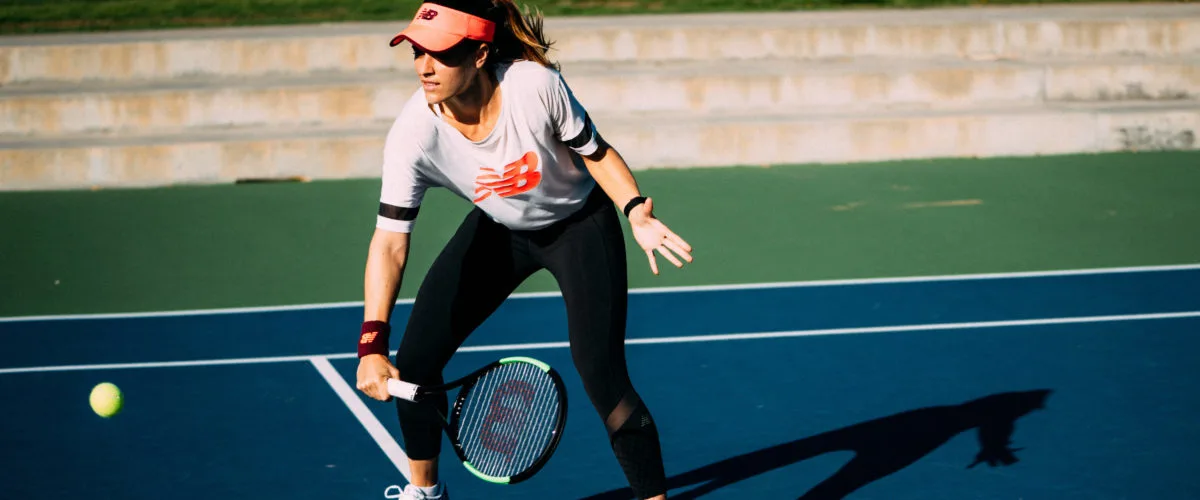
“On an abstract level, balance has been really, really important for me. Kind of my secret weapon. ”
We caught up with Nicole Gibbs the Wednesday before the Super Bowl. As she concluded an on-court practice session, she discussed a plan for the days ahead with her training partner.
“Let’s do a similar thing tomorrow, then take Friday off and see how your body responds,” he said. “We don’t want to have any soreness.” Nicole suggested she’d like to workout Saturday and Sunday morning, but then have a fun a “Super Bowl Day.”
“We’ll see about Monday, maybe a light Monday, and then hit it hard after that,” she said. “That way I can enjoy myself a little bit on Sunday. I’ll do what my WHOOP says on Monday morning. Or I might have to take it off so coach Mike doesn’t see my data. I do that sometimes [laughing], ‘I’m like oh yeah, weird, I didn’t wear it all weekend. So weird how that happens, so weird how I didn’t have it charged.’ Then Mike will text me and just be like ‘WHOOP?’”
Mike Guevara, known as “Coach Mike G,” is an elite performance trainer who Nicole employs as a fitness consultant. The two live on separate sides of the country, but Mike checks in on her WHOOP data on a daily basis via the coaching dashboard in the app.
“I started working with Nicole online to implement various strategies to help her recover from injury, try different approaches to nutrition, and to figure out a sleep solution for her because she wasn’t sleeping too well,” Mike said. “And whenever I’m in town or we’re in the same area, we work together hands on.”
And we back. Always a breath of fresh air with this one. #doITmoving #CMG
A post shared by COACH MIKE G. (@mrdoitmoving) on Feb 16, 2018 at 8:40am PST
“The thing is, we don’t know for sure if any of these strategies work unless we have objective data.” Mike explained. “I’ve been using WHOOP for a while now, as soon as Nicole and I decided to start working together, that was one of the requirements, I needed her to get a WHOOP. It allows me to guess and check the specific methods that we’re implementing. For example, in regards to sleep hygiene–creating the right sleep environment, blackout curtains, chamomile tea before bed, hot baths before bed, magnesium salts, etc.–what stuff works for her? Which actionable techniques create positive feedback in her WHOOP data?”
“I was for sure skeptical at first,” Nicole said. “I thought ‘It’s like a Fitbit? Isn’t that for pilates ladies?’ But Mike swore by it and he’d had so much success using WHOOP with other athletes. As soon as I started wearing it I was just blown away by how in-depth the data was and how much I could derive from it–how accurately it quantified what I was feeling. That really drove our emphasis on recovery.”
“We devise programs that are appropriate to my WHOOP Recovery levels,” Nicole elaborated. “If I’m in the green and we’re at a big training week, I’ll put in a ton of work that day and really go after it, make sure that I’m building my base. But if I wake up in the yellow, or worst case the red, I’ll pull back and spend less time on the court. That kind of push-pull is really important for us, to be able to put as much strain on my body as possible to build muscle mass without being destructive to what we’re doing.”
“UNCONVENTIONAL” PATH TO BECOMING A PRO
“I guess I didn’t really ever choose tennis,” Nicole confessed. “My dad started me when I was about three years old. He’d been a college player and was kind of the tennis version of a struggling artist. He really wanted to pass on the legacy of it to the next generation of his family, so he did everything in his power to make me an athlete. I think that’s honestly been amazing for me.”
Despite having tennis thrust upon her, Nicole has always made her own choices when it comes to her development in the sport. “A lot of players, especially the ones who are really good at a young age, their parents will encourage them to home school,” she said. “I was many times encouraged to do it myself, but that was never really authentic to who I was as a person. I was always juggling trying to be successful on the court with trying to be successful in the classroom. It was challenging, but ultimately shaped me into someone who was prepared to go to Stanford.”
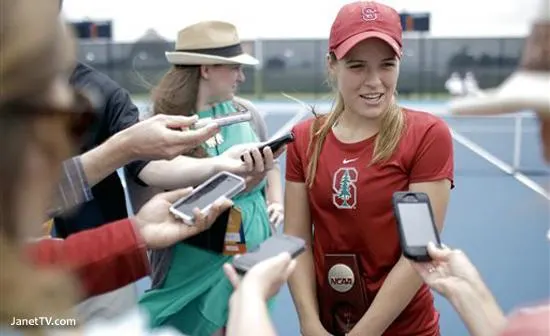
And while most world-class players turn pro straight from high school, Nicole went to Stanford for three years (where she won two NCAA championships in singles and one in doubles) before making the jump:
“I needed more time to develop and become a fuller person and athlete. I definitely pride myself in trying to pave my own path. We all know how hard it is to make it in sports. I think the more you can do to have a balanced childhood, the better off you’ll be as you mature and get older.”
SHIFTING FOCUS IN 2017
Last year, Nicole struggled with nagging injuries to begin her 2017 season. “I was having cartilage erosion issues with my right knee,” she said. “I’d been limping through a couple months of matches where I wasn’t performing my best and I was really frustrated with the way my body was feeling. Then after a swing of tournaments in March, I had a practice where I hit two balls and my wrist just gave out. It was super painful and I couldn’t even hit another ball. Now I had both my right knee and my right wrist out of commission. My coach and I sat down and looked at each other and decided ‘OK, this is not going to do it.’”
Nicole says it was in that moment that her outlook shifted.
“The silver lining to those injuries was that they got me thinking differently about the sport,” she recalled. “More about how I can make my career a long and sustainable one. I changed my focus and made health my No. 1 priority moving forward, which I think will have great effects for me in terms of longevity.”
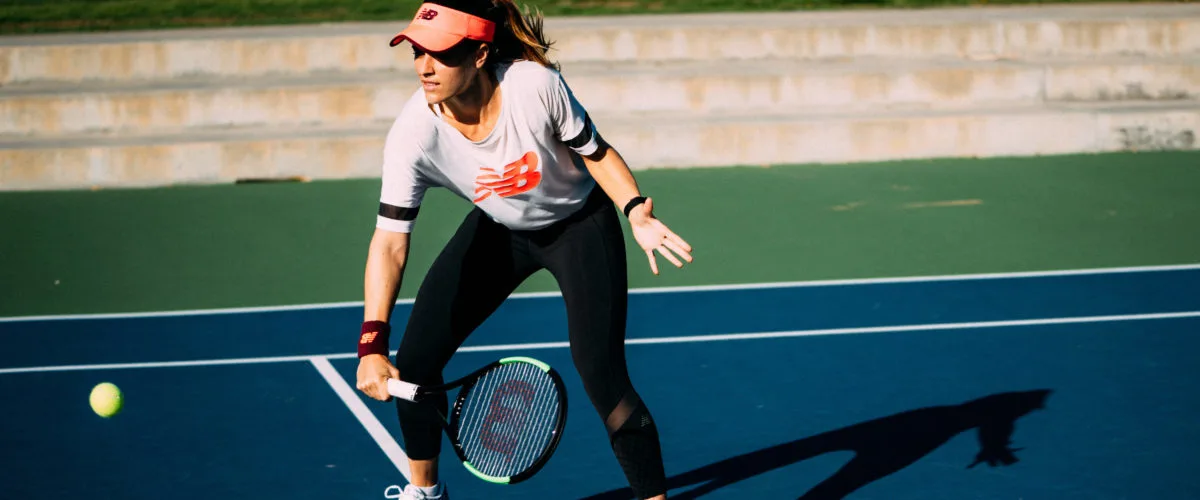
The first thing she did was hire a full-time fitness trainer to ensure she was taking proper care of herself on a daily basis. “We started bringing on a lot of recovery technology,” Nicole said. “We got NormaTec boots to enhance blood flow, we got Marc Pro for flushing the system after strenuous workouts, and we also got WHOOP.”
Ever since she began wearing a Strap last spring, WHOOP has played a key role in helping Nicole stay on the court. “I always want to feel like I’ve done everything I can to put myself in the best position to win,” she told us. “But ironically there’s a tipping point for that, going above and beyond only works up to a certain point. WHOOP shows me when I’ve trained just enough and my effort is worth it, or when I’m doing too much and my effort is detrimental to what I’m trying to accomplish. It allows me to find the balance between pushing myself to that next level, and protecting myself to be able to compete at that level.”
RECOVERY = BALANCE, PHYSICALLY AND EMOTIONALLY
That balance Nicole spoke of is a crucial aspect of her recovery process. “Outside of the obvious things like treating your body well, making sure you ice bath or get a massage after a challenging day, recovery for me means balance,” she theorized. “Doing things off the court that take your mind off of tennis. Stuff like hanging out with friends, going to the movies, those are all really undervalued parts of recovery.”
“I feel very fortunate to have what I have at home,” Nicole added, “including an incredible group of friends who have no idea about tennis, at all. That sounds funny, but it’s nice to be around people who don’t value you for what you’re doing professionally. The more I mature with the sport, the more I realize things you do to counteract what you’re doing athletically are as important as what you’re actually doing on the court or in the gym.”
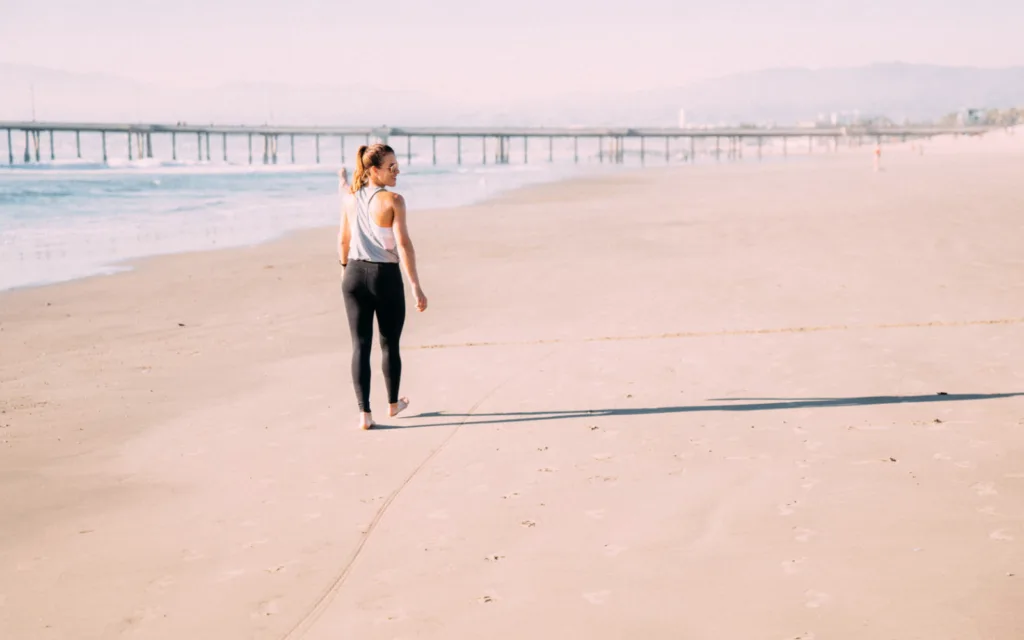
Nicole also noted the significance of psychological recovery, something often overlooked by many elite athletes:
“As a tennis player, your emotional state or your mental state profoundly affects your ability to compete. In a match, losing a disappointing point and having to rebound and play the next point 30 seconds later, or having the fortitude to play match after match, your emotional and mental stability is really paramount. One of the things I’ve found quite valuable with my WHOOP data is that it maps pretty perfectly not only to my physical well being, but also to how I’m feeling mentally and emotionally.”
Nicole uses this to her advantage to maximize the effectiveness of her training. “You have days when you don’t feel your best physically, and so you might tailor your workout to that. But, what you don’t necessarily account for are the changes in your mood that can come from taking on too much strain in a given week,” she said.
When you're cooked by 4pm (scale out of 21) ? @whoop pic.twitter.com/AABD8OeT0u
— Nicole Gibbs (@Gibbsyyyy) April 17, 2017
“If I wake up and see that my WHOOP Recovery is low, I’ll usually try to incorporate more mindfulness, meditation or yoga into my routine. That way I’m able to have a more constructive practice, as opposed to getting out there and feeling groggy, maybe being moody or impatient with my coach. I’ve found that those things positively influence my relationships with my team too–‘Warning, my Recovery is not great today, be patient with me!’ I also recognize that I have to be patient with myself and make sure that I’m being kind to everyone around me, which is not always easy when you’re tired and training hard.”
NOT IN THE GREEN?
Red Recoveries are a rarity for Nicole, but when they do happen, she almost always knows why. Sometimes they’re caused by the inevitably difficult travel schedule of a pro tennis player (although she claims to be a champion at avoiding jet lag):
“I’m away from home about 50% of the time, so half of the year I’m traveling. It can be anywhere from just down the road in Palm Springs, or Australia, or South America. We’re definitely plane hoppers in tennis. It has its benefits, you get to see the world. But, it can also be really challenging to get yourself into a performance-ready state week after week on different continents. I honestly am an excellent traveler at this point in my life though, I’ve gotten really good at sleeping on planes in economy. Obviously you’re never going to get a perfect night’s sleep when you’re traveling, but I’ve found that as long as I take the routines from home and bring them on the road with me, I can usually find really restful recovery periods.”
Take a look at her Sleep data prior to the 2018 Australian Open:

More often than not, Nicole’s occasional poor Recoveries are the result of specific choices she’s made. “Normally if I’m in the red, I feel like I’ve done it to myself,” she told us. “If I don’t give myself enough time to sleep, or maybe if I stay out late or have a few drinks with friends, that’s the kind of thing that’s going to put me in the red next day. We all have our moments where we want to have fun and unwind a little bit, that’s totally fine in its place. But for the most part, within three weeks of competition, I’m never going to have a red day.”
Below is a sample of Nicole’s Strain (blue) and Recovery (green and yellow) heading into a tournament in China at the beginning of the year:

“It’s really encouraging for me when I wake up and I see my Recovery in the green. That means I’ve checked all of the boxes that I can to be prepared for that event. ”
Having someone who holds her accountable is also a major factor when it comes to being properly recovered. “Coach Mike G is 100% dialed in on my Recovery levels every single day,” Nicole said. “He’ll ask me if it’s low, ‘What happened?’ or ‘Why didn’t you sleep eight hours?” He’s very thorough in checking in to see that I’m crossing the ‘T’s and dotting the ‘I’s with my Recovery, making sure I’m getting enough sleep, making sure I’m eating right. That’s all a huge priority for him.”
We asked Mike how he felt about Nicole’s philosophy regarding the importance of having balance in her life in order to maintain success:
“What makes one great athlete tick is not always going to be the same for others,” he said. “I think that mental well being and psychological strategy is very, very important in regards to how we as coaches can meet athletes half way when it comes to training. If an athlete is not in a good position mentally, whether it’s through practice, competing, whatever, they’ll never earn the type of recovery or adaptation that we’re trying to implement in the first place.”
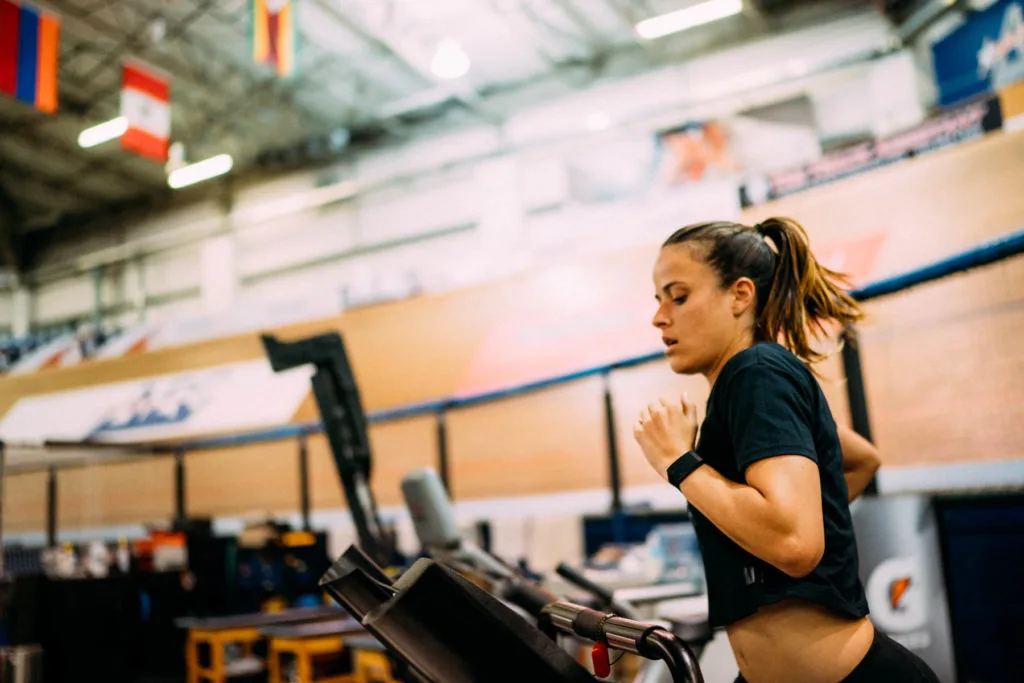
“That’s where the balance of life comes into play,” Mike continued. “From time to time I’ll say things to Nicole like ‘Go out to dinner, avoid red meat, but have a glass of wine or a beer or two.’ For her, to read those words in a text message or hear them from my voice, it not only makes her happy, it lets her understand that I’m trying to collaborate with her. At the end of the day, psychological and mental well being are just as important as all the other factors, I think that’s what she means by balance.”
WHAT LIES AHEAD
“From using the lessons that I learned over the course of the year, I was able to get a lot of traction towards the end of the 2017 season,” Nicole said. “By U.S. Open time, I was playing some of the best tennis of my career. I went up against the No. 1 player in the world [Karolina Pliskova] in the second round and I lost 6-4 in the third set. I won the first set and I think we were tied 3-3 in the second, so I definitely had my chances.”
A post shared by Nicole Gibbs (@gibbsyyyy) on Sep 1, 2017 at 5:01am PDT
Going toe-to-toe with the world’s best player on tennis’ biggest stage was an eye-opening experience for Nicole. “It reaffirmed everything I’d always held as a dream, but was never sure how realistic it was–that I really can play at the absolute top level of my sport,” she said. “To see that become a reality in a sense was so exciting. I’m trying to take all of the positive energy from that and built on it in 2018.”
http://inthegreen.whoop.com/gibbs/